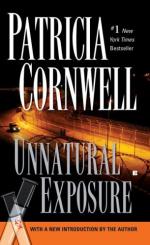|
This section contains 3,546 words (approx. 12 pages at 300 words per page) |

|
SOURCE: Messent, Peter. “Patricia Cornwell's Unnatural Exposure and the Representation of Space: Changing Patterns in Crime Fiction.” Clues: A Journal of Detection 21, no. 2 (fall–winter 2000): 37–45.
In the following essay, Messent explores the changing landscape of investigative fiction, citing Unnatural Exposure as a prime example.
The representation of space, and particularly of city space, is of crucial importance in American hard-boiled detective fiction. In this article, I first map the normative relationship between the detective and that urban landscape which he or she inhabits, using the work of Walter Benjamin, Michel de Certeau and Steve Pile as my critical base. I then examine the Patricia Cornwell novel, Unnatural Exposure (1997), to illustrate how, in this particular contemporary crime novel, such relationships are subject to considerable alteration. The impact of sophisticated modes of detection associated with modern police practice, and in particular of computer technology, has meant a significant shift of...
|
This section contains 3,546 words (approx. 12 pages at 300 words per page) |

|


